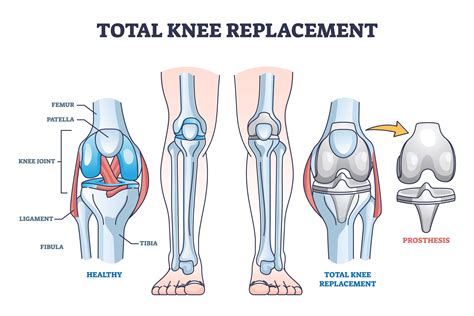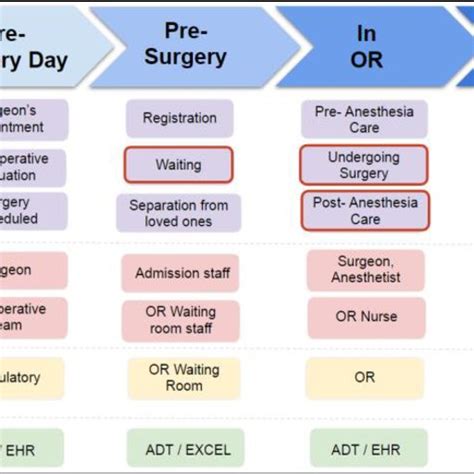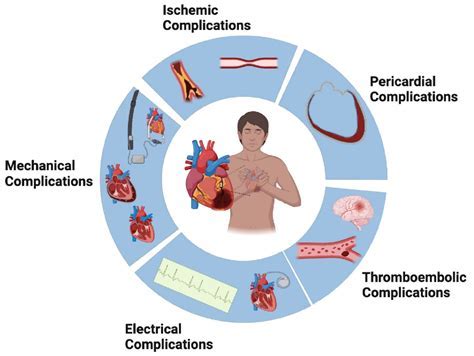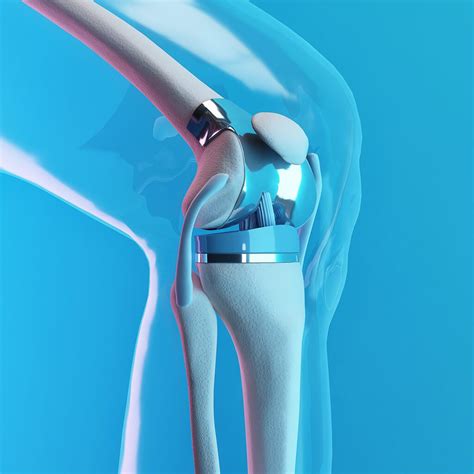Intro
Discover the ins and outs of Full Knee Replacement Surgery, including knee arthroplasty, joint replacement, and orthopedic surgery, to alleviate knee pain and restore mobility.
Knee replacement surgery is a common and highly effective procedure for addressing severe knee damage or arthritis, significantly improving the quality of life for those suffering from chronic knee pain. The importance of understanding the intricacies of full knee replacement surgery cannot be overstated, as it empowers patients to make informed decisions about their health care. With advancements in medical technology and surgical techniques, the outcomes of knee replacement surgeries have dramatically improved, offering hope to individuals who have been limited by their condition. As the population ages, the demand for knee replacement surgeries is expected to increase, making it crucial to delve into the details of this procedure, its benefits, and what patients can expect.
The decision to undergo full knee replacement surgery is typically made after other treatments have been exhausted. Patients often suffer from debilitating pain, stiffness, and a significant reduction in mobility, which can severely impact daily activities and overall well-being. Understanding the process and implications of knee replacement surgery is vital for anyone considering this option. From the initial consultation with an orthopedic surgeon to the post-operative rehabilitation phase, being informed can alleviate anxiety and ensure a smoother recovery. Moreover, advancements in surgical techniques, such as minimally invasive surgery and the use of advanced materials for the prosthetic components, have made the procedure more appealing, with the potential for less tissue damage, smaller scars, and quicker recovery times.
For individuals facing the prospect of knee replacement surgery, it's essential to grasp the fundamentals of the procedure, including the types of knee replacement surgeries available, the materials used for the artificial joint, and the factors that influence the success of the surgery. The surgical process itself involves removing the damaged portions of the knee joint and replacing them with artificial components, which are designed to mimic the natural movement of the knee. This complex procedure requires meticulous planning and execution, highlighting the importance of choosing an experienced and skilled orthopedic surgeon. As with any major surgery, there are risks and potential complications, but for many, the benefits of significantly reduced pain and improved mobility far outweigh these considerations.
Understanding Full Knee Replacement Surgery

Full knee replacement surgery, also known as total knee arthroplasty, is a surgical procedure where the diseased knee joint is replaced with artificial material. It is a highly successful operation for treating severe degenerative joint diseases like osteoarthritis, rheumatoid arthritis, and psoriatic arthritis, as well as knee injuries and deformities. The goal of the surgery is to relieve pain, restore function, and improve the patient's quality of life. The artificial joint is made of metal and plastic components that are designed to withstand the stresses and strains of everyday activities. The surgery typically requires a hospital stay, followed by a rehabilitation program to help the patient regain strength and mobility in the knee.
Preparation for Surgery
Preparation for full knee replacement surgery involves several steps, including a comprehensive medical evaluation to ensure the patient is healthy enough for the procedure. This evaluation may include blood tests, urine tests, and other diagnostic tests to assess the patient's overall health. Patients are also advised to stop taking certain medications, such as blood thinners, to minimize the risk of bleeding during and after surgery. Additionally, smoking cessation is highly recommended, as smoking can impair wound healing and increase the risk of complications. Patients should also prepare their home for recovery by removing tripping hazards, installing handrails in strategic locations, and having a stable chair for recovery.Types of Knee Replacement Surgeries

There are several types of knee replacement surgeries, each tailored to address specific needs and conditions. The most common types include total knee replacement, partial knee replacement, and revision knee replacement. Total knee replacement involves replacing the entire knee joint with an artificial one, while partial knee replacement involves replacing only the damaged part of the knee. Revision knee replacement is performed when the initial knee replacement surgery has failed, requiring the removal and replacement of the artificial joint. The choice of surgery depends on the extent of the knee damage, the patient's age, weight, and activity level, as well as the presence of any underlying health conditions.
Benefits of Knee Replacement Surgery
The benefits of knee replacement surgery are numerous and well-documented. Significant pain relief is one of the most immediate and noticeable benefits, allowing patients to engage in daily activities and hobbies without the burden of chronic pain. Improved mobility and function are also key benefits, enabling patients to walk, climb stairs, and participate in low-impact sports with greater ease. Furthermore, knee replacement surgery can improve the patient's overall quality of life, enhance their mental health by reducing depression and anxiety related to chronic pain, and increase their independence. With advancements in surgical techniques and prosthetic materials, the longevity of the artificial joint has increased, with many lasting 15 to 20 years or more.The Surgical Process

The surgical process for full knee replacement surgery typically begins with the administration of anesthesia to ensure the patient's comfort during the procedure. The surgeon then makes an incision in the knee to access the joint. The damaged portions of the knee joint are carefully removed, and the ends of the bones are prepared to accept the artificial components. The prosthetic components are then implanted, and the surgeon ensures that the joint is properly aligned and functioning smoothly. The incision is closed, and the patient is taken to the recovery room for post-operative care. The entire process usually takes a couple of hours, although this can vary depending on the complexity of the case and the patient's overall health.
Recovery and Rehabilitation
The recovery and rehabilitation process following knee replacement surgery is crucial for achieving optimal outcomes. Immediately after surgery, patients can expect to experience some pain, swelling, and bruising around the knee, which can be managed with pain medication and ice therapy. Patients are encouraged to start moving the knee as soon as possible, even if it's just a little, to prevent stiffness and promote healing. A physical therapist will work with the patient to develop a rehabilitation plan, which includes exercises to improve range of motion, strength, and mobility. The rehabilitation process can take several months, with most patients able to resume their normal activities within 3 to 6 months after surgery.Risks and Complications

As with any major surgery, there are risks and complications associated with full knee replacement surgery. These can include infection, blood clots, nerve damage, and reaction to the anesthesia. Additionally, there is a risk of the artificial joint loosening or failing over time, which may require revision surgery. Patients who are overweight or have underlying health conditions may be at a higher risk for complications. It's essential for patients to discuss these risks with their surgeon and follow post-operative instructions carefully to minimize the risk of complications.
Longevity of the Artificial Joint
The longevity of the artificial joint is a significant consideration for patients undergoing knee replacement surgery. The lifespan of the prosthetic components can vary depending on several factors, including the type of materials used, the patient's activity level, and their overall health. On average, a well-crafted artificial joint can last 15 to 20 years, although some may last longer. Factors that can affect the longevity of the joint include the patient's weight, activity level, and the presence of any underlying health conditions. Regular follow-up appointments with the surgeon can help identify any potential issues early on, potentially extending the life of the artificial joint.Advancements in Knee Replacement Surgery

Advancements in knee replacement surgery have significantly improved the outcomes and patient experience. Minimally invasive surgical techniques, for example, result in smaller incisions, less tissue damage, and quicker recovery times. The development of more durable and biocompatible materials for the prosthetic components has also extended the lifespan of the artificial joint. Additionally, the use of robotic-assisted surgery and 3D printing technology has enhanced the precision and customization of the procedure, allowing for a better fit and potentially longer-lasting results. These advancements continue to evolve, offering new hope for patients with severe knee damage or arthritis.
Choosing the Right Surgeon
Choosing the right surgeon for knee replacement surgery is a critical decision that can significantly impact the outcome of the procedure. Patients should look for a surgeon who is board-certified in orthopedic surgery and has extensive experience in performing knee replacement surgeries. It's also important to consider the surgeon's approach to patient care, their willingness to answer questions, and their ability to explain the procedure and recovery process in a clear and understandable manner. Additionally, patients should research the hospital or surgical center where the procedure will be performed, ensuring it has a good reputation and a low rate of complications.Conclusion and Next Steps

In conclusion, full knee replacement surgery is a highly effective procedure for addressing severe knee damage or arthritis, offering significant pain relief, improved mobility, and a better quality of life. While there are risks and potential complications, the benefits of the surgery far outweigh these considerations for many patients. By understanding the procedure, its benefits, and the factors that influence its success, patients can make informed decisions about their healthcare. If you or a loved one is considering knee replacement surgery, it's essential to consult with an experienced and skilled orthopedic surgeon to discuss the specifics of the procedure and what to expect.
We invite you to share your experiences or ask questions about knee replacement surgery in the comments below. Your insights and inquiries can provide valuable information and support to others who are navigating this journey. Additionally, consider sharing this article with anyone who might benefit from this comprehensive overview of full knee replacement surgery.
What is the average recovery time for full knee replacement surgery?
+The average recovery time for full knee replacement surgery can vary, but most patients can resume their normal activities within 3 to 6 months after surgery.
How long does a knee replacement last?
+The longevity of a knee replacement can vary, but on average, a well-crafted artificial joint can last 15 to 20 years.
What are the risks and complications associated with knee replacement surgery?
+Risks and complications can include infection, blood clots, nerve damage, and reaction to the anesthesia. Patients who are overweight or have underlying health conditions may be at a higher risk for complications.
